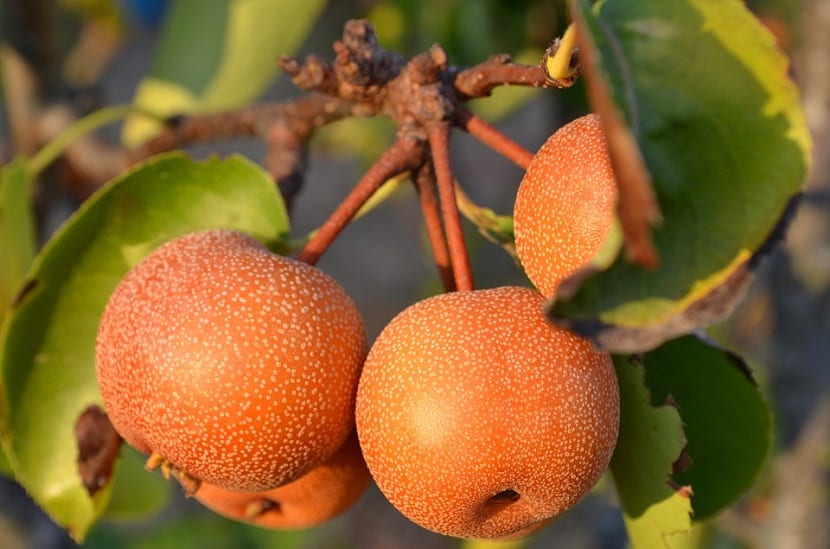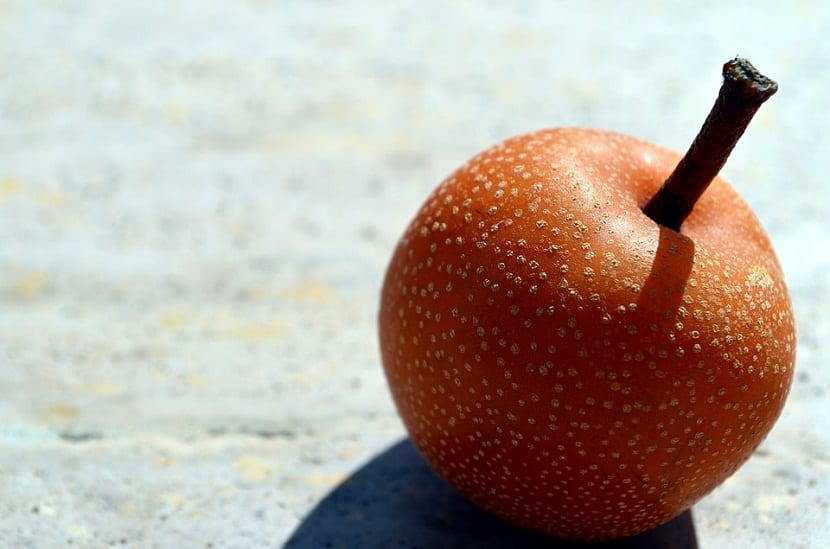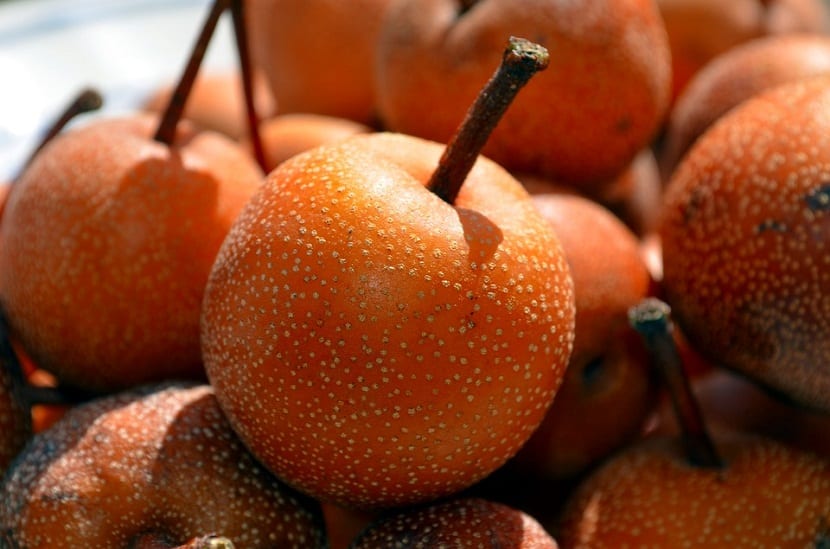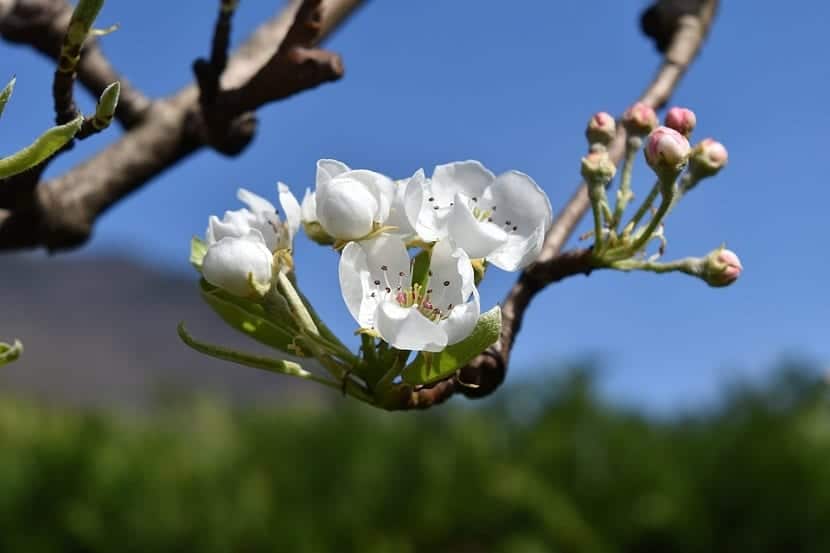
The Pyrus pyrifolia or commonly known by the name of nashi, is a tree that belongs to the pinkish plant family. This pear tree has its origin in Asian countries and is also known by other names such as nashi pear, Asian pear, Korean pear, sand pear, Japanese pear, oriental pear, apple pear, bae, li, nashipati and as naspati.
Although it is normally called an apple pear, it is a fruit that is not the result of the cross between a pear and an apple, but rather is a name that has been given by the form, as well as the texture, very similar to that of an apple.
Features

The flowers of this pear tree are white and have between three and six petals. Its flowering time is in the month of April for the northern hemisphere.
For Asian countries, it represents a fairly popular symbol in the summer months, and can be found very frequently in many country gardens, accompanied by pink flowers with a slight purple hue produced by peaches or plums.
This is a pear that should never be confused with the white Chinese pear, since it only grows in China.
In certain Latin American countries such as Argentina and Mexico, it is usually known by the name of guayambongo, which in the Raramuri language means, the fruit of youth.
What is nashi used for?
This is a pear tree well known for the sweetness that has its fruits, and it is considered a very popular fruit in East Asia. In these places they are usually eaten fresh and also crunchy.
These oriental pears are not usually part of cakes very often, nor are jams made, since this is a fruit that has a high water content and the fresh, grainy and crunchy texture is completely different from the other pear varieties found in Europe.
Therefore, they are usually eaten raw once peeled. However, the nashi pear can be added to many preparations to give them a little touch of sweetness. The flavor of this fruit is like pear, pineapple, honey and a slight oriental touch.
Farming
Ecology
All the Soil needs as well as climate are very similar to those of the European pear tree, with the only difference that it needs fewer hours of cold temperatures.
It is important that the soil has a medium, deep texture, with an excellent capacity to retain water, with a good amount of nutrients and with a slightly acidic composition. Soils that are very clayey or very limestone should be avoided, since they can cause an iron chlorosis as well as a magnesium blockage.
The nashi is a quite demanding tree with regard to certain elements, such as iron, magnesium and calcium, so it is necessary to be very attentive to the amount of these components and if necessary, this correction must be made before starting sowing .

Climate
It can tolerate a quantity of water of about 2000mm, but it has also been shown that it can be developed correctly with a quantity of 900mm or even less, the optimum quantity being approximately 1200mm.
If the humidity is very low during the summer, it can represent a pretty serious problem for its cultivation, since it produces limits for the thickening of the fruits when they approach maturity.
Temperatures
Cold winter temperatures are no limit to nashi cultivation. How is a early flowering tree, it is more exposed to the frosts of the spring months compared to the European pear tree, therefore, it is necessary to avoid these risks by placing a protection for said frosts.
With regard to temperatures in summer, generally it suits a lot carefully at a maximum of 35 ° C, always bearing in mind that the surface must remain damp.
Winds
When the young leaves are still tender they are very susceptible to winds, since burns may appear on its surface.
With respect to the fruits, they can become bruised due to rubbing and they can fall before harvesting due to the movement produced by the wind. Those who have smooth skin, have greater sensitivity, it is for this reason that windproof curtains are recommended in high-risk areas.
Fertilization
The amount of compost to be placed depends on the type of soil, as well as the requirements of the variety of nashi. But keep in mind that this is a plant that is very sensitive to a lack of iron, magnesium and calcium, as already explained above.
For the control of other minerals such as potassium, nitrogen, phosphorus and sulfur, a Chemical analysis before starting sowing, in order to correctly determine the dose, quantities and distribution of the fertilizer.
The pruning of the nashi

In general, trees that have not been pruned can have a greater volume as well as a much longer life compared to those that have been pruned, however, can lead to irregular fruit production, by altering the years of production with some in which it is scarce or that there is none.
Besides all this, fruit can be of rather low quality caused by poor sap supply.
Pruning to shape
You can start with this task after the plant has been planted; the execution of it will depend on the shape you want to give the tree.
The forms that can best be adapted to nashi are supported and a skilled workforce is often required. This shape allows spaces to be economized and can give a huge production in places with little space.
Pruning for fruiting
Through this practice what is sought is to maintain a balance in each of the reserve substances that the plant has, since fruiting is the product of these reserve substances having accumulated in the branches.
The pruning known as releo, is the one that offers the greatest amount of benefits in those trees that have a partial total production in lamburdas and brindillas. When it is desired that the youngest specimens begin with the fruiting method, it is necessary that the pruning be done lightly.
Harvesting the fruits
Es need to perform this task very carefully to avoid damaging the pulp. They have to be selected and packed manually to maintain quality, so harvesting in a timely manner is also necessary. Compared with the fruits of the peal of Europe, those of the nashi they can reach their state of maturity on the same plant.
Some specimens like the shinseki and nijiseiki, they turn green or yellowish green when they reach maturity. The rough fruits usually change from a brownish green to a golden brown.